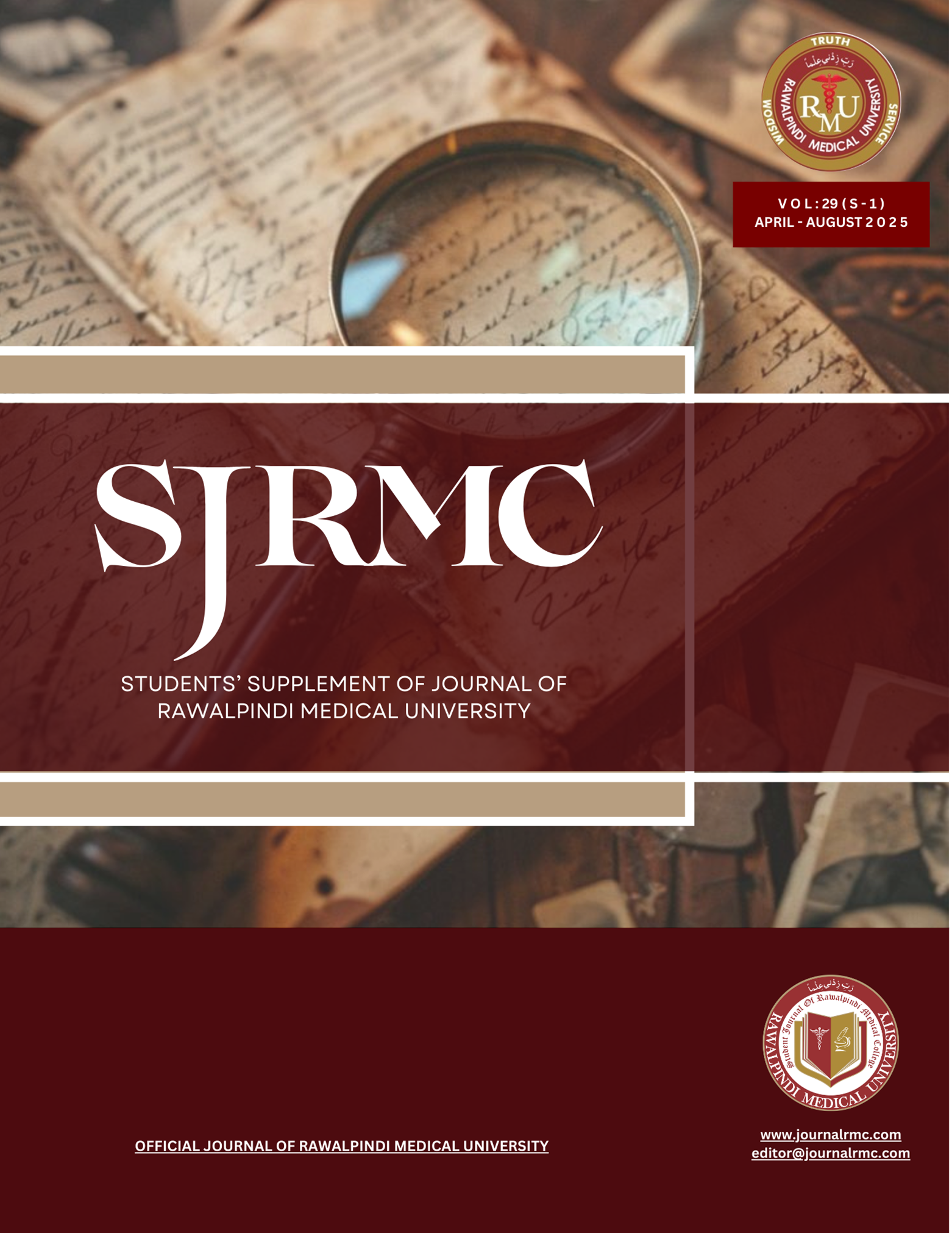Abstract
Abstract
Introduction
Hepatitis refers to viral liver inflammation leading to acute and chronic illness. In Pakistan its prevalence is 4.9% for hepatitis C and 2.5%. Reuse of contaminated needles, syringes, or sharp objects in healthcare settings causes the spread of this virus. Vaccination is an effective tool for its prevention but unfortunately a low vaccination rate is observed in developing countries. Healthcare workers, because of negligence and non-vaccination are severely exposed to it. In medical practice, medical students are more prone to hepatitis because of lack of awareness, vaccination and high prevalence of needle stick injuries. Thus, proper knowledge and outlook is important for safety. Working on medical students' apprehension is significant for hepatitis control in future as they can raise consciousness regarding disease in themselves and their patients.
Methodology
We conducted a cross-sectional study using an online questionnaire-based survey recording the demographic details, knowledge, attitude, practice and vaccination status of non clinical year medical students. Total data of 249 students was collected through convenience sampling. Statistical analysis was performed.
Results
Out of 266 participants, ranging from age 17 to 27, the majority were females 202 (75.9%). Among these, 66.5% strongly agreed that hepatitis was caused by a virus whereas, hepatitis causes liver inflammation was also supported by majority (43.2% strongly agree, 41% agree). Regarding attitude, only 38% considered healthcare workers to be at an increased risk for hepatitis B but 52.6% believed in the efficacy of Hepatitis B vaccination. Assessment of vaccination status showed 92 (34.6%) people not being vaccinated while 174 (65.4%) were vaccinated.
Conclusion
A mixed response was achieved from pre-clinical year students about their knowledge in regards to Hepatitis B. Majority students were found vaccinated, showing a positive attitude towards vaccination.

